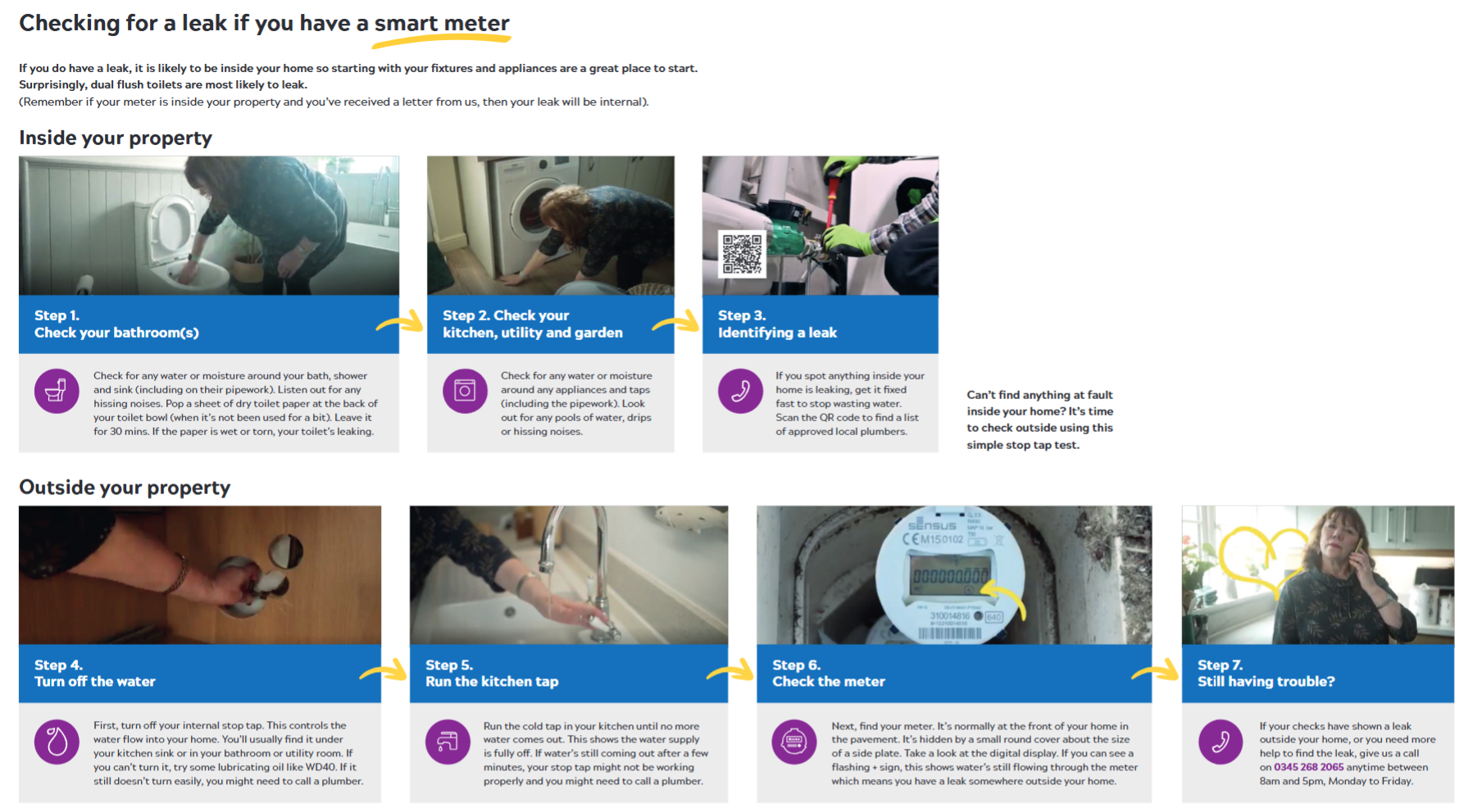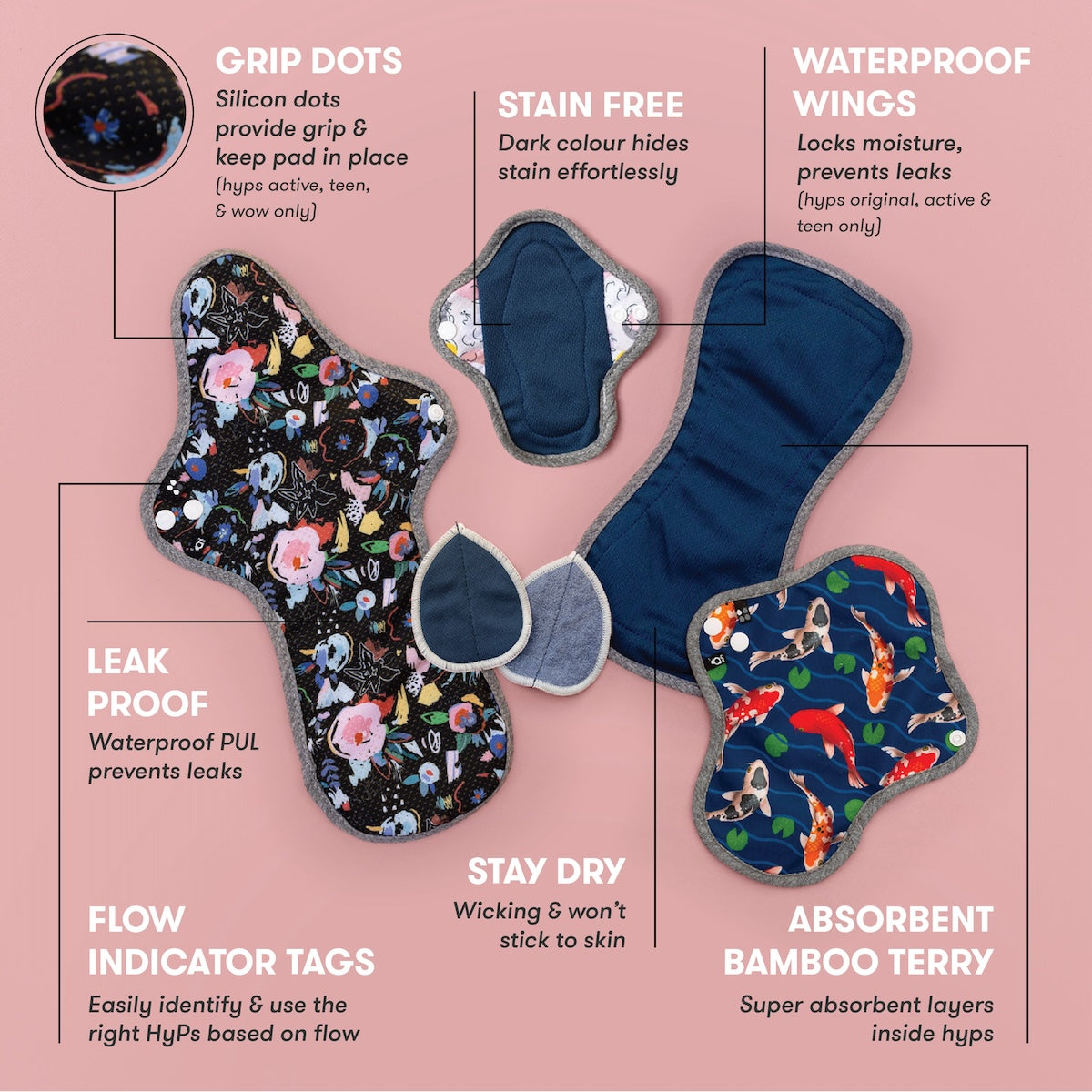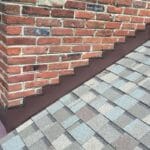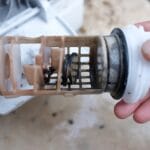Imagine sitting in the comfort of your home, enjoying a quiet evening, when suddenly you hear it—a faint yet persistent sound of water dripping or flowing under your stairs. It’s unsettling, isn’t it?
You might find yourself wondering: “Why do I hear water dripping flowing under my stairs? ” This curious and potentially alarming noise can be more than just a nuisance; it might be signaling something that needs your immediate attention. Understanding why this happens is crucial not only for your peace of mind but also for the safety and integrity of your home.
This blog post will guide you through the possible causes of that mysterious sound and help you identify whether it’s a minor issue or something that requires urgent action. By the end of this article, you’ll have a clearer picture of what might be happening beneath your stairs and what steps you need to take. Stay with us to turn this puzzling moment into a proactive solution for your home.
Common Causes Of Water Sounds
Have you ever heard water sounds under your stairs? It’s puzzling. These sounds could mean different things. Understanding the causes helps in solving the problem. Here are some common causes of these mysterious water sounds.
Plumbing Issues
Leaky pipes often create water sounds. Old or damaged pipes might drip. This drip can echo under the stairs. Check for wet spots on walls or ceilings. These spots might reveal the problem source. Tightening connections might stop the noise.
Condensation Accumulation
Condensation can mimic dripping water. Cold pipes meeting warm air create moisture. This moisture drips, causing water sounds. Insulating pipes helps prevent this issue. It keeps the cold and warm air separate.
Foundation Cracks
Cracks in the foundation might let water in. Rainwater or groundwater seepage could create sounds. Listen closely after heavy rain. Examine the foundation for visible cracks. Sealing cracks might stop the water flow.

Credit: www.anglianwater.co.uk
Identifying Plumbing Leaks
Hearing water flowing under the stairs might signal hidden plumbing leaks. A dripping noise often points to damaged pipes or loose connections. Finding the source quickly prevents damage and costly repairs.
If you’ve ever been startled by the sound of water dripping or flowing under your stairs, you’re not alone. This common issue can be perplexing and concerning. Identifying plumbing leaks early is crucial to preventing costly repairs and potential damage to your home. Whether you’re a seasoned homeowner or a first-time renter, understanding how to pinpoint the source of these mysterious water sounds can save you time and stress.Inspecting Pipes
Start by examining the exposed pipes in your home. Look for any visible signs of leaks such as moisture, corrosion, or water stains. Even a small trickle can create a noticeable sound over time. Use a flashlight to check the hard-to-see areas, especially under the stairs where plumbing often runs. A flashlight can highlight subtle leaks that might not be immediately apparent. Do you notice any dampness or unusual patches? This could be a sign of a hidden leak that needs immediate attention.Checking Water Meters
Your water meter is a valuable tool in detecting leaks. First, ensure all water sources in your home are turned off. Observe the meter closely. If it continues to move, it indicates water is flowing somewhere in the system. A slow-moving meter might suggest a small leak, while a fast-moving one could mean a more significant issue. Have you noticed your water bill increasing unexpectedly? This might be the clue you need to investigate further.Listening For Running Water
In a quiet house, listen carefully for the subtle sounds of running water. This can often lead you to the source of the leak. Walk around your home, paying special attention to areas near the stairs. The sound might be louder in certain spots. Could the noise be coming from behind a wall or under the floor? These are common places where leaks can hide. By taking these steps, you can get ahead of potential plumbing issues. Addressing leaks promptly protects your home and offers peace of mind. Have you identified the source of that mysterious water sound yet? Taking action now can save you from bigger headaches later.Condensation Problems
Ever wondered why you hear the sound of water dripping or flowing under your stairs? It might be more than just an annoying noise. Condensation problems could be the culprit. It’s a silent troublemaker that can lead to bigger issues if not addressed. Let’s dive into how condensation forms and ways to tackle it effectively.
Humidity Levels
High humidity is a breeding ground for condensation. When warm air collides with cool surfaces, moisture forms. This can make your home feel damp and uncomfortable. You might notice it more during rainy seasons or in basements where air circulation is poor.
Consider using a dehumidifier to manage the moisture levels in your home. It’s a simple addition that can significantly reduce condensation. Plus, it helps maintain a healthier living environment.
Insulation Gaps
Insulation gaps in walls or floors can trap moisture. These gaps act like pathways for condensation, leading to unwanted water sounds. Have you checked the insulation under your stairs recently?
Patch up any gaps with appropriate insulation material. Not only does this prevent moisture build-up, but it also enhances your home’s energy efficiency. It’s a win-win situation for both your comfort and your wallet.
Ventilation Solutions
Ventilation plays a crucial role in combating condensation. Without proper airflow, moisture has nowhere to escape. This can lead to water sounds and even mold growth.
Improve your home’s ventilation by opening windows or installing exhaust fans. It’s a straightforward fix that promotes air circulation, reducing condensation risks. Think about adding vents specifically under your stairs for targeted relief.
Can you imagine living in a space where dripping water sounds are a thing of the past? Tackling condensation problems head-on will help you achieve a quieter and more comfortable home. Address these issues today and enjoy a more peaceful living environment.

Credit: lilhelperusa.com
Foundation And Structural Concerns
Hearing water under stairs can signal a plumbing leak or drainage issue. Ignoring this may lead to structural damage. Investigate promptly to prevent potential hazards.
Hearing the unsettling sound of water dripping or flowing under your stairs can be more than just a nuisance. It might be a warning sign of deeper issues with your home’s foundation and structural integrity. Ignoring these sounds could lead to expensive repairs and even compromise the safety of your home. Understanding the potential causes and solutions is crucial. Let’s dive into the specifics of foundation and structural concerns.Signs Of Foundation Cracks
Cracks in your foundation can allow water to seep in, creating that dripping sound you hear. You might notice small cracks in your basement walls or floors. These could be early signs that your foundation is shifting or settling. Have you observed any uneven floors or doors that don’t close properly? These are red flags that shouldn’t be ignored. It’s essential to address them promptly to prevent further structural damage.Waterproofing Solutions
Waterproofing your basement is a proactive way to protect against water intrusion. Consider applying a waterproof sealant to your basement walls and floors. This can help keep moisture out and reduce the likelihood of hearing water under your stairs. Installing a sump pump is another effective solution. It actively removes water from your basement, keeping your foundation dry and secure. Have you thought about how these measures could safeguard your home?Professional Assessment
While you can take some steps on your own, a professional assessment is invaluable. A structural engineer can provide a thorough evaluation of your foundation. They can identify potential risks and recommend tailored solutions. Have you ever wondered if your DIY fixes are enough? Consulting with an expert can give you peace of mind and potentially save you money on future repairs. It’s a smart investment in your home’s long-term health.Impact Of Weather Conditions
Cold weather can cause pipes to expand and contract, leading to water sounds beneath stairs. Rainfall or melting snow may also result in water seeping through foundations, causing audible dripping noises. Understanding these weather impacts can help address concerns and maintain home safety.
Have you ever noticed a mysterious dripping or flowing sound under your stairs, and wondered where it’s coming from? Often, weather conditions play a significant role in this puzzling phenomenon. The elements outside can sneak their way into your home, creating unexpected surprises in the most unexpected places. Understanding how different weather conditions affect your home can help solve the mystery.Rainwater Drainage
Heavy rains can overwhelm your home’s drainage system. When gutters and downspouts fail to divert water away effectively, it can accumulate around your home’s foundation. This water can seep into spaces under your stairs, causing that annoying dripping sound. Consider taking a walk outside during a rainstorm. Observe where the water pools around your house. Redirecting your downspouts or installing a French drain can keep these areas dry and silent.Snow And Ice Melting
When temperatures rise after a heavy snowfall, melting snow can create a similar issue. The melted water can find its way into cracks and crevices, including those under your stairs. This melting process is often slow, leading to prolonged dripping sounds. Pay attention to the transition from winter to spring. You might notice the sound intensifying as the snow melts rapidly. Insulating your home properly can help prevent this by ensuring snow doesn’t settle on your roof or around your foundation.Seasonal Changes
Seasonal transitions bring shifts in temperature and humidity, which can impact the materials in your home. Wood and metal can expand or contract, creating gaps that allow water to seep in. These subtle changes might be the reason behind the water sound under your stairs. Think about how your home feels different throughout the year. You might notice creaky floors in winter or sticky doors in summer. Similarly, the structure under your stairs can shift, providing pathways for water to flow or drip. By paying close attention to these weather-related factors, you can better understand and address the mysterious water sounds under your stairs. Could this be the key to maintaining a peaceful and dry home environment?Diy Troubleshooting Steps
Hearing water dripping or flowing under your stairs can be unsettling. However, before you panic and call a professional, there are a few DIY troubleshooting steps you can take. By following these steps, you can determine the cause of the noise and possibly fix the issue yourself.
Basic Inspection Tips
Start with a thorough inspection of the area around your stairs. Look for any visible signs of water damage, such as discolored patches on walls or ceilings. Check for wet spots or puddles on the floor, which could indicate a leak.
Listen carefully to pinpoint where the sound is coming from. Is it near a wall, under the stairs, or in the basement? Knowing the exact location can help you identify the source.
Have you noticed any changes recently, like a spike in your water bill or reduced water pressure? These could be clues pointing to a hidden leak.
Temporary Fixes
If you find a small leak, you can try a temporary fix to stop the water from dripping. Use waterproof tape or a pipe clamp to seal a minor leak in a pipe. This won’t last forever, but it can buy you some time to plan a permanent solution.
You can also place a bucket or a tray under the leak to catch any dripping water. This helps prevent further water damage to your floors or walls.
Have you ever tried wrapping a leaking pipe with a rubber patch and hose clamp? It’s a quick fix that can work wonders in a pinch.
When To Call A Professional
While DIY fixes can be helpful, there are times when it’s best to call a professional. If the leak is severe or you can’t locate the source, professional help is essential. Ignoring a significant leak could lead to expensive repairs and further damage.
Are you noticing mold, mildew, or persistent dampness? These are signs that the problem is beyond a quick fix and needs expert attention.
Ultimately, your safety and the integrity of your home should be your top priority. Don’t hesitate to seek professional assistance if you’re unsure about tackling the issue yourself. After all, peace of mind is worth the investment.
Preventive Measures
Strange water sounds under stairs can signal potential leaks. Check for visible plumbing issues to prevent damage. Regular maintenance and quick repairs help keep your home safe.
Hearing water dripping or flowing under your stairs can be unsettling. It could signify potential water damage, mold growth, or structural problems. Addressing these concerns is crucial to maintaining a safe and comfortable home. Implementing preventive measures can save you time, money, and stress in the long run.Regular Maintenance
Regular maintenance is your first line of defense against water issues. Check for leaks around plumbing fixtures, under sinks, and in basements. A small leak can become a big problem if left unattended. Inspect your home’s foundation and walls for cracks. Even tiny fissures can allow water to seep in. Repair these promptly to avoid larger issues. It’s also wise to clean gutters and downspouts regularly. Clogged gutters can lead to water overflow, damaging your home’s foundation.Waterproofing Techniques
Waterproofing is a proactive approach to keep your home dry. Consider applying waterproof sealant to your basement walls and floors. This barrier can prevent moisture from entering. Installing a sump pump is another effective technique. It helps remove accumulated water, especially during heavy rains. Ensure it’s in good working condition to avoid sudden failures. You might also explore drainage systems around your home’s exterior. Proper drainage channels water away from your foundation, minimizing the risk of seepage.Improving Home Ventilation
Good ventilation can reduce moisture build-up. Ensure that your home has adequate airflow. This is particularly crucial in areas like basements and crawl spaces. Install exhaust fans in bathrooms and kitchens. These areas generate a lot of moisture, and fans help vent it outside. Consider using dehumidifiers in damp areas of your home. They can significantly lower humidity levels, making it harder for mold and mildew to thrive. Have you ever noticed how fresh your home feels with proper airflow? It’s not just a comfort factor; it’s a vital part of your home’s health. Addressing ventilation issues can be a game-changer in preventing water-related problems.
Credit: lilhelperusa.com
Frequently Asked Questions
What Causes Water Sounds Under Stairs?
Water sounds may come from leaky pipes, condensation, or drainage issues. Check for visible leaks or moisture signs.
How Can I Identify A Plumbing Leak?
Look for wet spots, mold, or increased water bills. Listen for constant dripping sounds.
Should I Worry About Mold Growth?
Yes. Mold thrives in damp areas. It can cause health issues and structural damage over time.
Can Condensation Cause Water Noises?
Yes. Temperature changes can cause pipes to sweat, leading to dripping sounds. Insulation can help.
When To Call A Professional For Help?
If sounds persist, or you see damage. Professionals can diagnose and fix the problem accurately.
Conclusion
Identifying dripping sounds under stairs is crucial. It helps prevent damage. Regular checks can spot problems early. Fix leaks to save money. Protect your home from costly repairs. Use simple tools for inspection. Seek expert advice if needed. Water issues can escalate quickly.
Acting fast prevents bigger headaches. Keep your living space dry and safe. A little attention now avoids future stress. Maintain your home’s value and comfort. Prioritize safety and peace of mind. Remember, a dry home is a happy home. Stay proactive and ensure a sound environment.




